Economy

Manufacturing Update: Most Indicators Show Contraction
Written by Peter Wright
November 21, 2019
Steel Market Update is please to share this Premium content with Executive-level subscribers. For information on how to upgrade to a Premium-level subscription, email Info@SteelMarketUpdate.com.
Manufacturing output shows contraction in nine of the 10 indicators analyzed by Steel Market Update, which helps to explain the current weakness in steel demand in some sectors.
This report summarizes 10 data streams that describe the state of U.S. manufacturing in general and the steel industry in particular. We have reported on most of these separately in our Steel Market Update publications, and therefore will be brief in this summary. We don’t expect these data sources to all point in the same direction. Our intent in summarizing them in one document is to provide a consensus of the state of this critical steel consuming sector.
In data released in November, the year-over-year growth rate of nine of the 10 data streams was negative on a 3MMA (three-month moving average) basis and one was positive. Figure 1 is a summary of data received in November and shows the year-over-year percentage change on a 3MMA basis. The summary sheet shows directional arrows comparing November data releases to October’s data. Based on American Iron and Steel Institute estimates of steel mill shipments by market classification, almost 50 percent of the steel consumed in the U.S. is manufacturing-oriented. This breaks down to about 27 percent in ground transportation, 9 percent in machinery and equipment, 5 percent in appliances, 4 percent in defense and about 4 percent in containers.
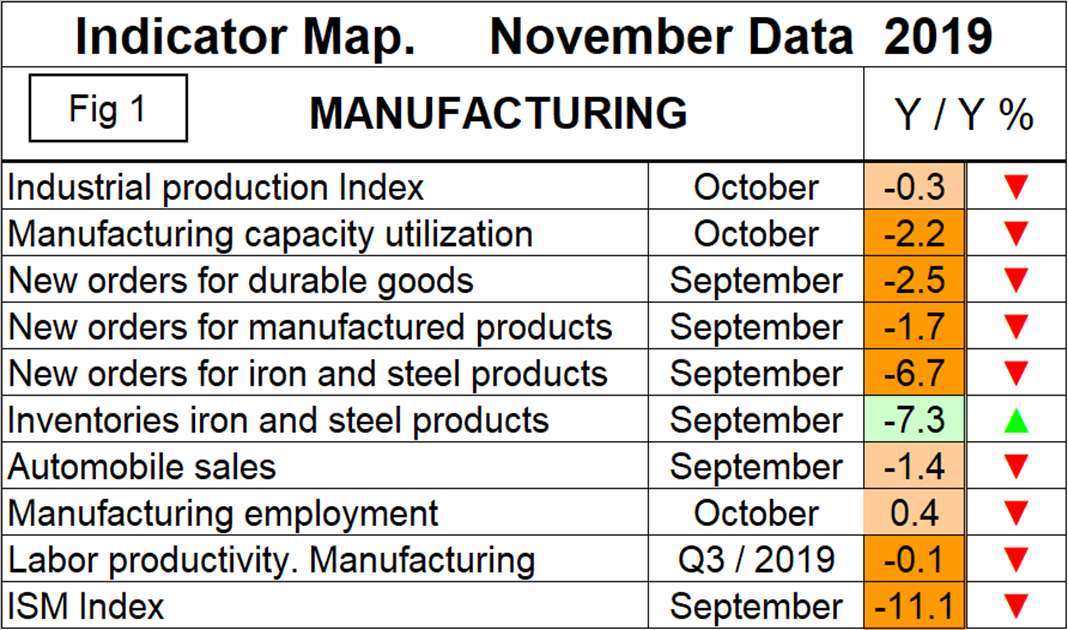
The Industrial Production Index
Figure 2 shows the 3MMA of the IP index since January 2007 as the blue line and the year-over-year growth as the brown bars. March 2017 was the first month of positive growth in the 3MMA since April 2015. Year-over-year growth peaked at 5.8 percent in November 2018 and has contracted every month through October when it reached negative 0.3 percent. Manufacturing capacity utilization improved from 74.48 percent in January 2017 to 77.01 percent in December last year and has declined in 2019 to 74.68 percent in October with a negative year-over-year growth rate of 2.2 percent on a 3MMA basis (Figure 3).
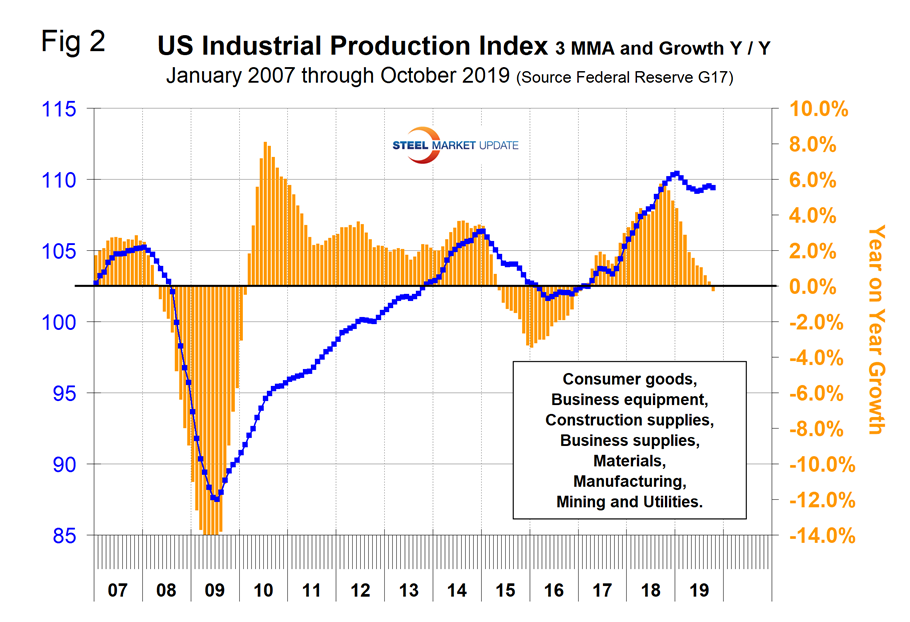
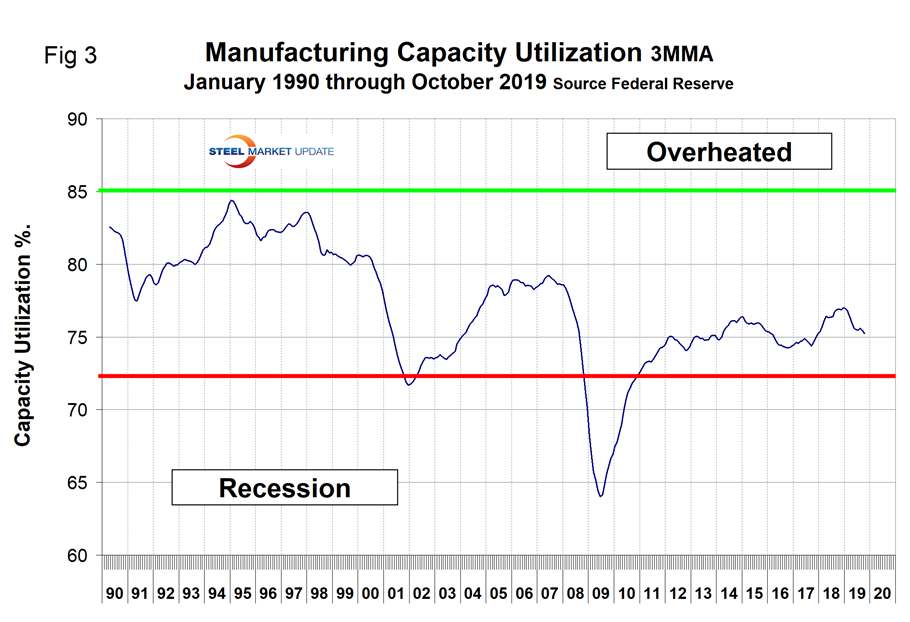
New Orders for Durable Goods (Advance Report)
The year-over-year growth rate of durable goods reached 10.1 percent in September last year and since then has declined to negative 2.5 percent this September. Figure 4 shows the 3MMA since January 2010. This is considered to be one of the earliest indicators of both consumer and business demand for U.S. manufactured goods. Orders have picked up since June, but year over year have declined.
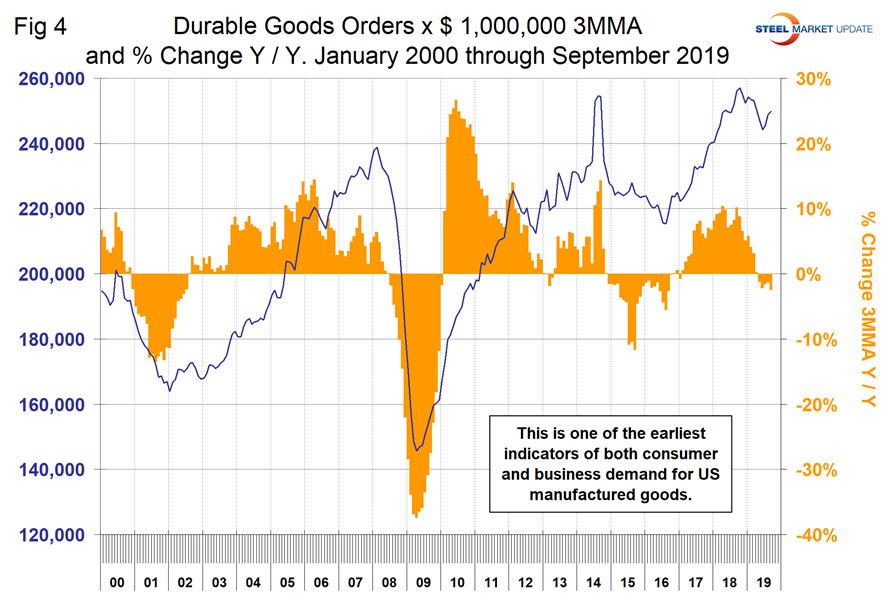
New Orders for Manufactured Products
The growth rate of new orders for manufactured products as reported by the Census Bureau declined for 12 straight months on a 3MMA basis since September last year through September 2019 when it reached negative 1.7 percent (Figure 5).
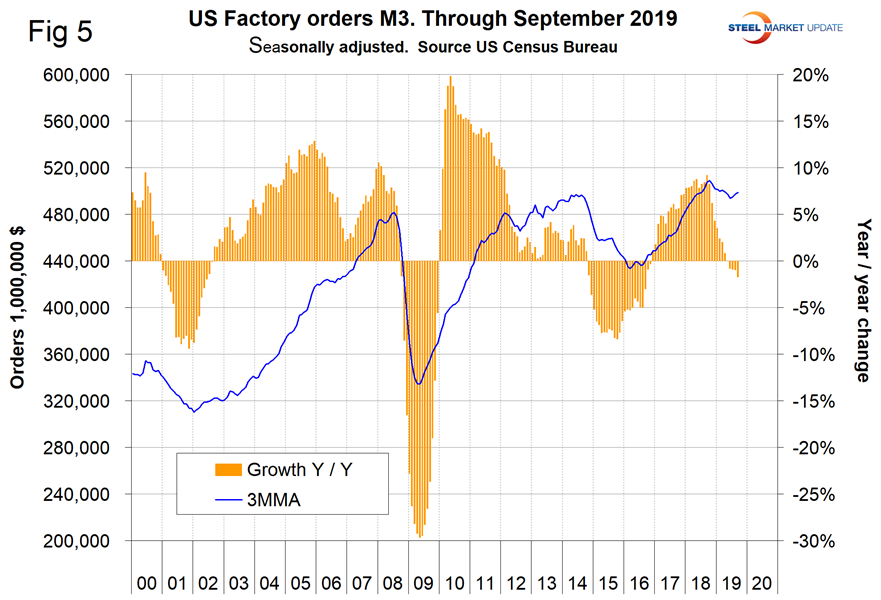
New Orders for Products Manufactured from Iron and Steel
Within the Census Bureau M3 manufacturing survey is a subsection for new orders for Iron and Steel products. Figure 6 shows the history since January 2000. The year-over-year growth rate has also declined every month since last September through September 2019 when it reached negative 6.7 percent.
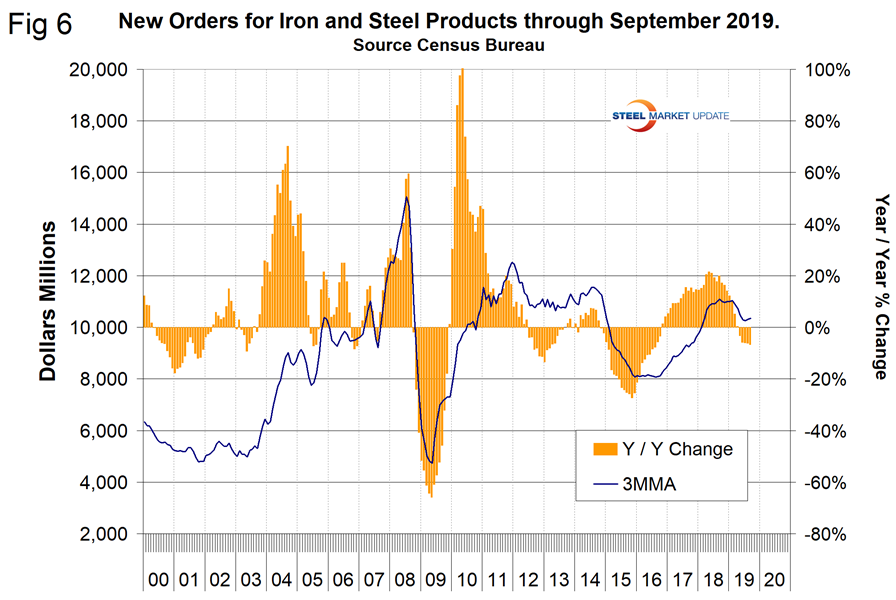
Inventories of Products Manufactured from Iron and Steel
The only bright spot in this whole report is that inventories of iron and steel products declined by more than new orders; therefore, we rated this indicator as having a positive direction in Figure 1. The inventory build was at a rate of 12.2 percent year over year in December and fell every month through September when it was negative 7.3 percent (Figure 7).
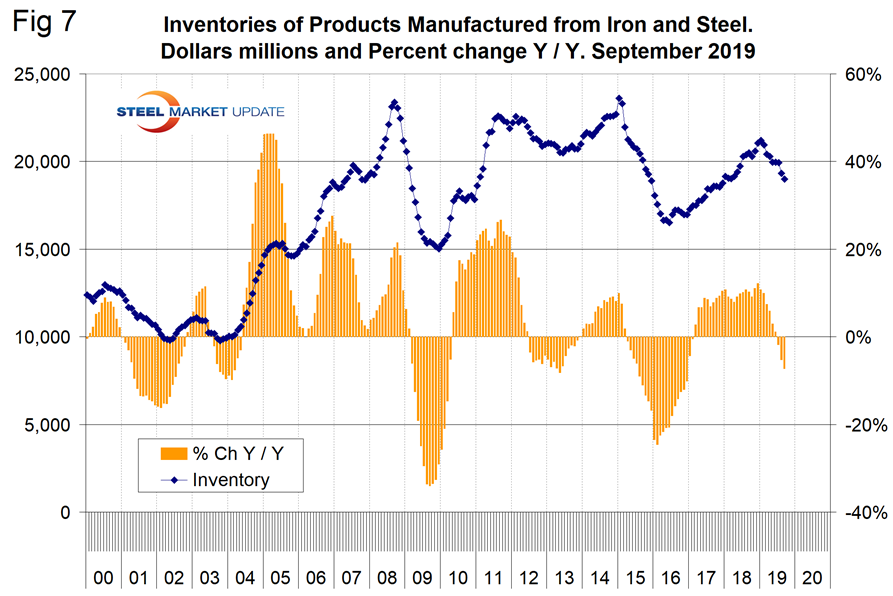
Light Vehicle Sales in the U.S
Year over year on a 3MMA basis, light vehicle sales were down by 1.4 percent in October when sales totaled 16.6 million units annualized and were comprised of 73.1 percent light trucks and 26.9 percent autos. Light vehicle sales have trended down slightly in the last three years as measured by the cyclical peaks. Declining sales in the auto component in the last three years have resulted in automakers such as GM closing several small car plants. The light truck category includes SUVs and crossovers. Overall, sales are still higher than the pre-recession level (Figure 8). Import market share in October was 23.5 percent, which was the highest since December 2013.
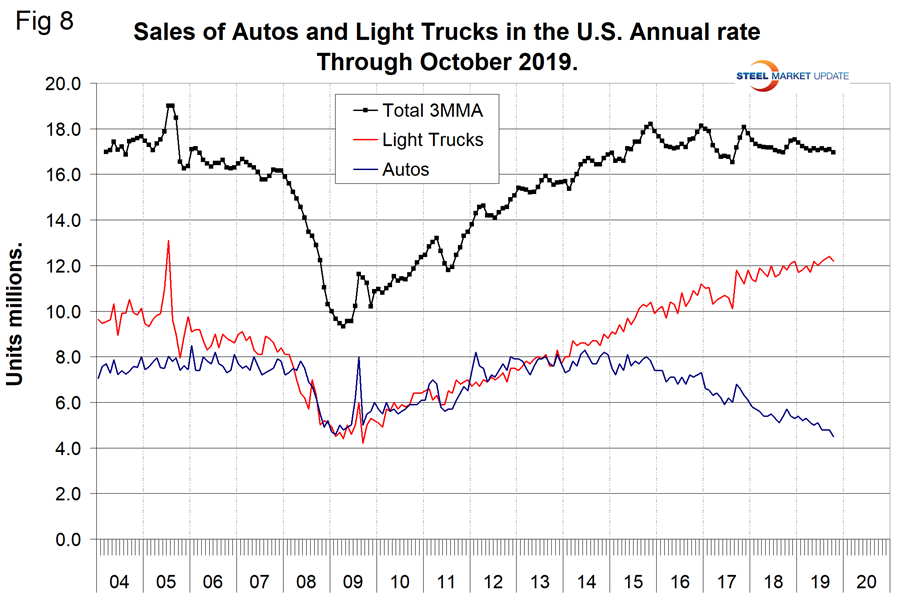
Manufacturing Employment
Manufacturing employment plummeted during the recession and gradually improved from the spring of 2010 through 2014. Growth was flat in 2015 and declined slightly in 2016 when 23,000 jobs were lost during the year as a whole. There was a turnaround in 2017, and in the 12 months of 2018 about 264,000 jobs were created. The annualized rate of manufacturing job creation in the first 10 months of 2019 was 2,400, which was partly depressed by the GM strike, but beyond that has slowed markedly from last year (Figure 9). The motor vehicles and parts subcomponent of manufacturing employment had a net loss of 59,000 jobs in the first 10 months of 2019, also negatively impacted by the GM strike.
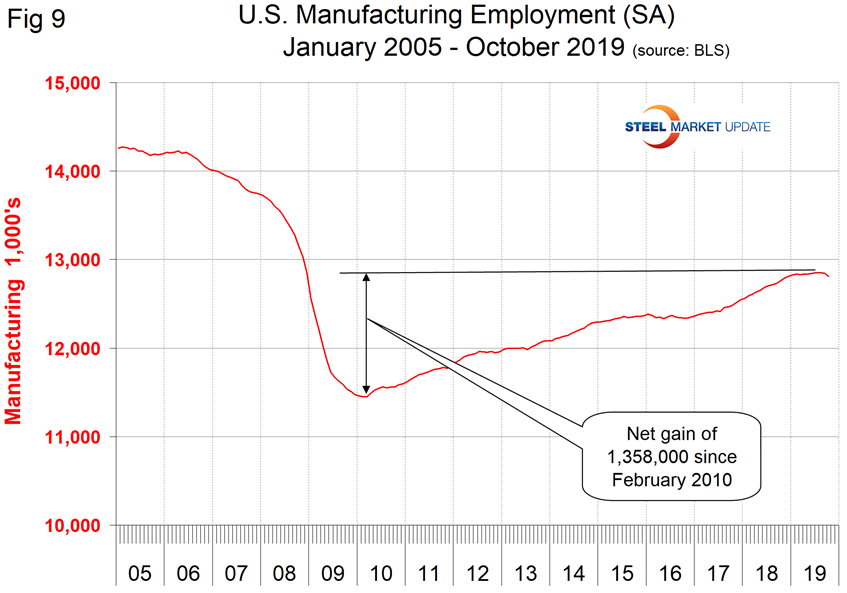
Manufacturing Productivity
The Bureau of Labor Statistics reported that in Q3 2019, manufacturing productivity declined by 0.1 percent, down from an average of positive 0.74 percent in the four quarters of 2018 (Figure 10).
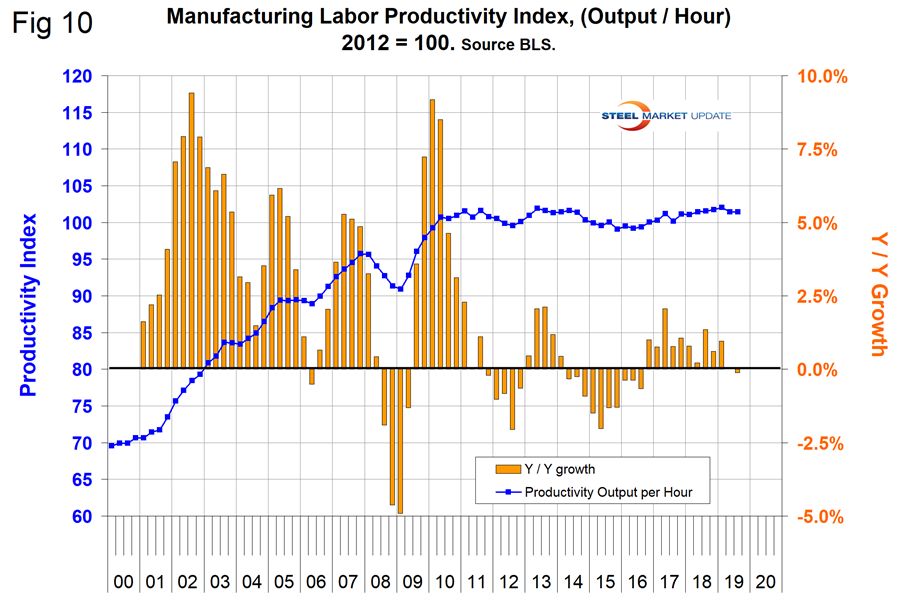
The ISM Manufacturing Index
The Institute for Supply Management’s Manufacturing Index is a diffusion index. ISM states: “Diffusion indexes have the properties of leading indicators and are convenient summary measures showing the prevailing direction of change and the scope of change. An index value above 50 indicates that the manufacturing economy is generally expanding; below 50 indicates the opposite.”
Figure 11 shows the 3MMA of the ISM index from January 1997 through October 2019. The index surged from January 2016 through October 2017, leveled off through October 2018 and has declined since then. The index had a value of 48.3 in October with a 3MMA of 48.4. The 3MMA was down by 11.1 points year over year. August was the first month for the 3MMA of the index to be below 50 since March 2016.
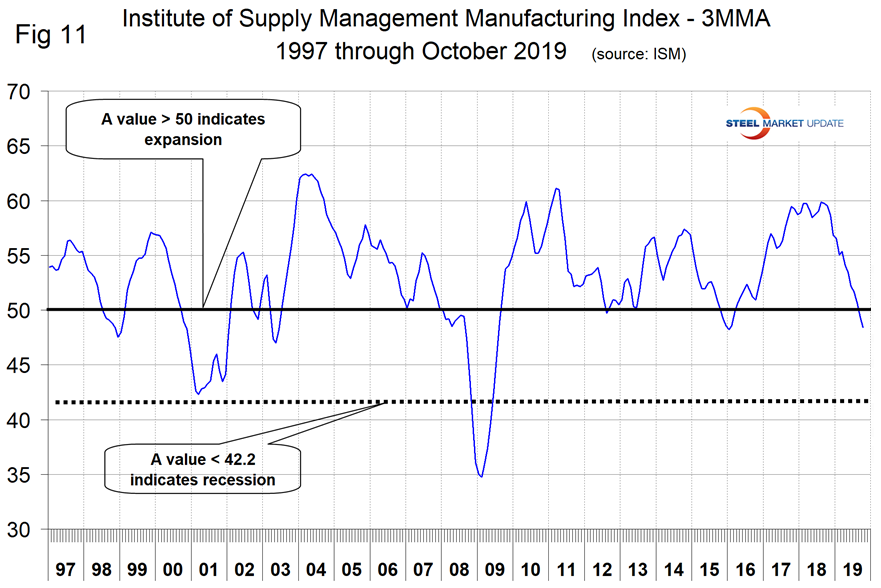

Peter Wright
Read more from Peter WrightLatest in Economy

Steel groups welcome passage of budget bill
Steel trade groups praised the passage of the Big Beautiful Bill (BBB) in Congress on Thursday.

Industry groups praise Senate for passing tax and budget bill
The Steel Manufacturers Association and the American Iron and Steel Institute applauded the tax provisions included in the Senate's tax and budget reconciliation bill.

Chicago PMI dips 0.1 points in June
The Chicago Purchasing Managers Index (PMI) slipped 0.1 points to 40.4 points, in June.

Multi-family pullback drives housing starts to 5-year low in May
US housing starts tumbled in May to a five-year low, according to figures recently released by the US Census Bureau.

Architecture firms still struggling, ABI data shows
Architecture firms reported a modest improvement in billings through May, yet business conditions remained soft, according to the latest Architecture Billings Index (ABI) release from the American Institute of Architects (AIA) and Deltek.
